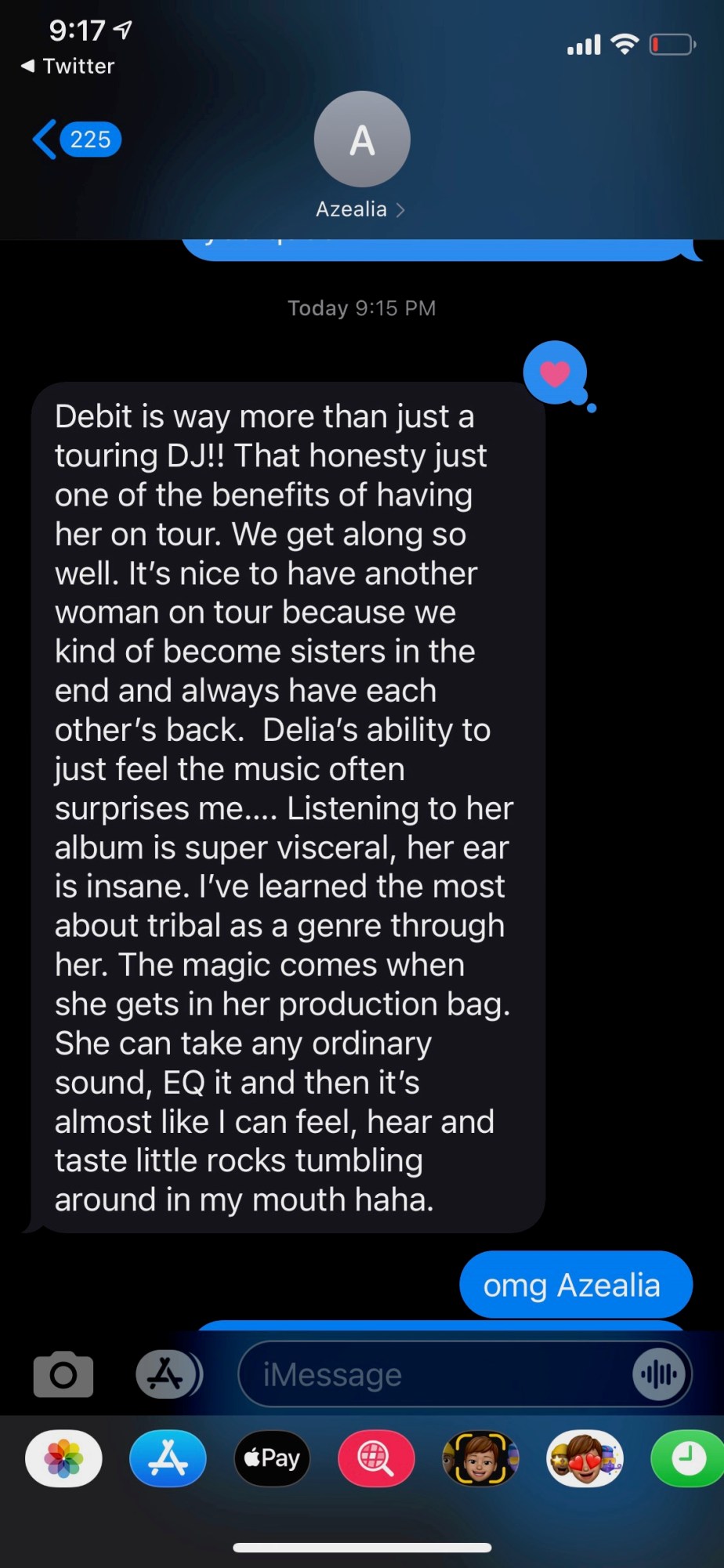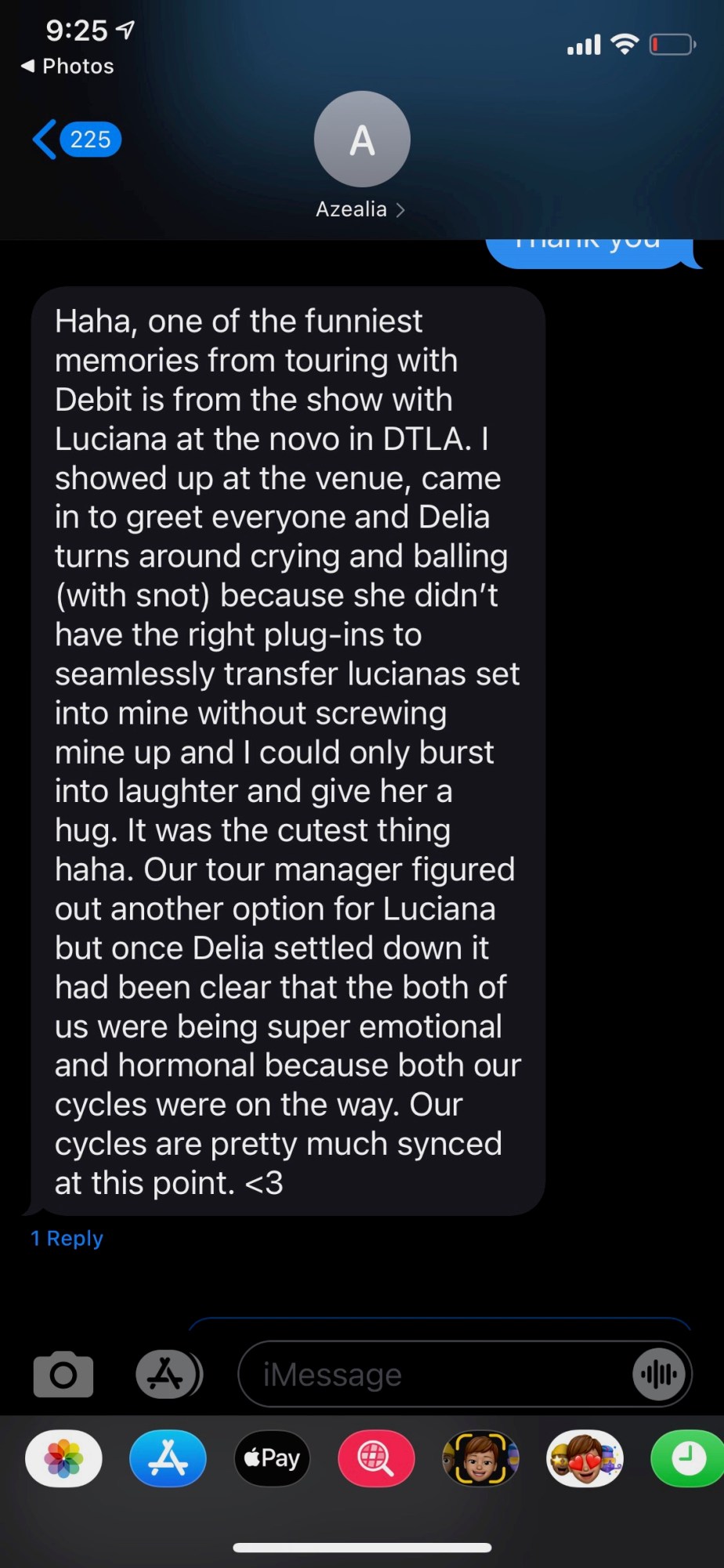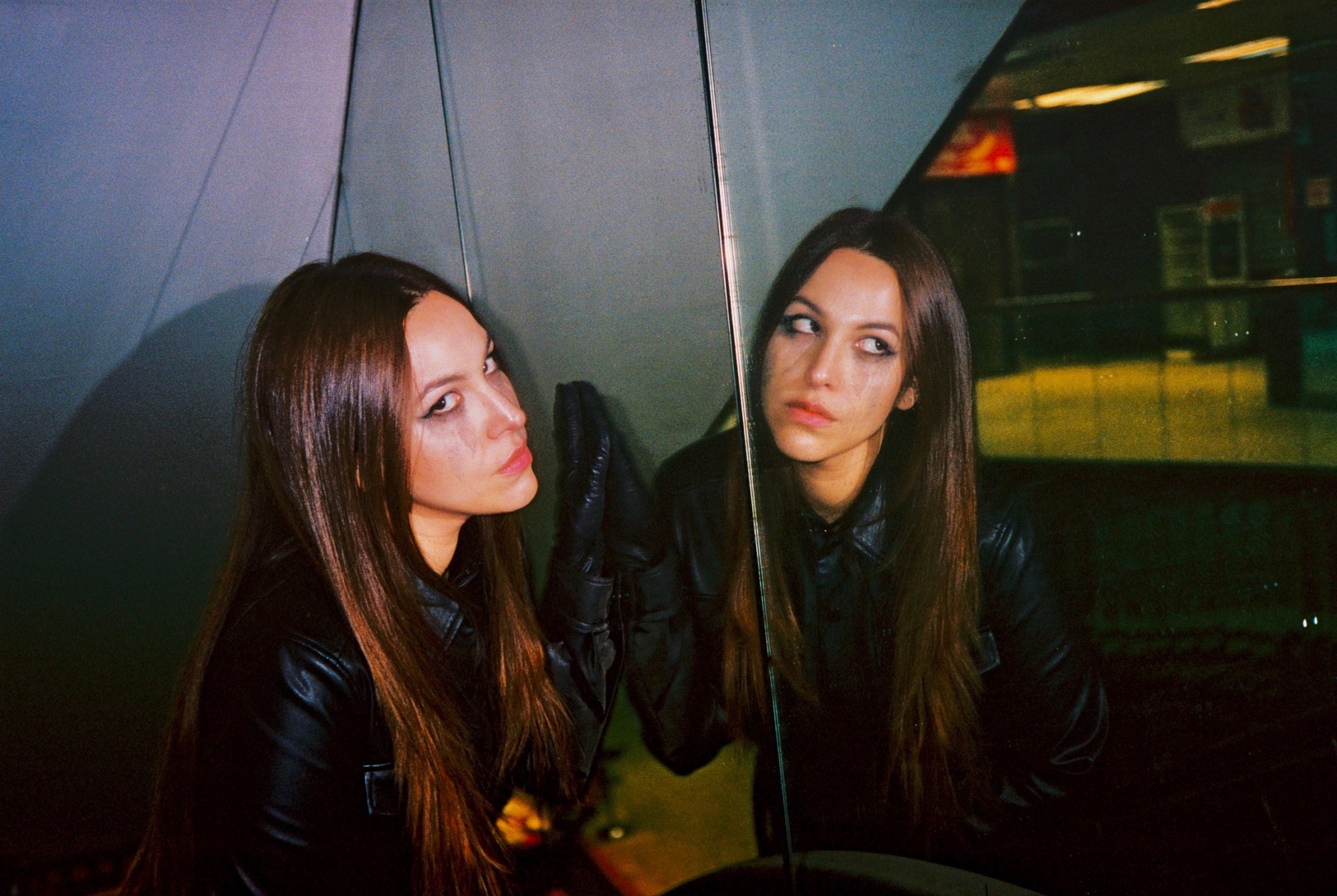In the late classical period of the Mayans, approximately 600 to 900 A.D., they developed a number of wind instruments, including flutes, whistles, ocarinas and more. While there is no surviving documentation of what sort of music was made with them, anthropologists have posited that the Mayans used these tools for more than just music, including rites and rituals, as well as interspecies communication.
For her second full-length album, Delia Beatriz, the musician and academic known as DEBIT, clocked some serious time at the Universidad Nacional Autónoma de México, home to the Mayan Studies Institute, to research and sample the ancient Mayan instruments. She built the samples into data sets and fed them into a machine learning algorithm that, in turn, transformed the sonic relics into a “digital palette” of frequencies that served as her own instruments. After nearly two years tinkering, she wove the material into The Long Count, a haunting collection of ambient soundscapes that was released last February on cult electronic label Modern Love.
While the album has been well received by music press, the most interesting feedback might be from cats. Mine started sniffing the speakers and yowling when The Long Count was played at high volume, while DEBIT noticed her roommate’s cat eating with its paws, all human-like, during a listening sesh.
“The instruments I sampled could have once been used to communicate with Jaguars or jungle cats, which were influential in their culture. Mayans did want to use these instruments for interspecies communication, as well as possibly time-hacking, ceremonies or communing with the divine,” DEBIT explains. “They were used for more than just music, but we don’t really know to what effect those instruments were employed.”

Brian Eno made Music for Airports. DEBIT has incidentally created Music for Felines. However, The Long Count gets its actual name from the Mesoamerican Long Count Calendar, which is non-linear and aimed to predict human history. By using ancient samples and machine learning algorithms, DEBIT served as both archivist and speculative futurist — an aural time-bender, if you will. “I wanted to use this very modern technology to give us a connection to the past, as well as try to fill in some holes and gaps. However, I consider it to be a work of sci-fi more than history.”
The album is brainy, make no bones about it. But it’s viscerally arresting in and of itself, regardless of the conceptual backdrop. Full of oozing whistles, hypnagogic bass tones and banshee-like drone sounds, it can easily transport the listener to someplace celestial. It can also spook the hell out of you and conjure fantasies of spirits if you dig in after an edible or two. It’s a unique release for DEBIT, though not a hard pivot. Her past work has reimagined tribal guarachero music from Northern Mexico (SYSTEM), embraced a postmodern, Frankenstein approach to club music (Animus) and even includes a remix of Missy Elliot’s “Get Ur Freak On” that takes the classic’s title to heart; DEBIT’s version is real freaky and all her own.
DEBIT hasn’t pigeonholed herself as solely an avant-garde musician, and her other projects speak to her crossover appeal. She’s contributed runway scores for fashion brands like Barragán, and was tapped by Azealia Banks to accompany the iconoclastic rapper on tour. “DEBIT is way more than just a touring DJ. Listening to her album is super visceral, her ear is insane,” Azealia wrote over text. “The magic comes when she gets in her production bag. She can take any ordinary sound, EQ it and then it’s almost like I can feel, hear and taste little rocks tumbling around in my mouth.”
DEBIT has that uncanny ability to straddle pop and fringe culture while consistently being herself. We met up with the vanguard for a photoshoot and interview, where she weighed in on how ambient music has “been done dirty,” what it’s like DJing for Azealia Banks versus her own sets and why her next record will be all bangers.

It’s been a month since the album dropped. Do you feel a sense of relief now that it’s on shelves?
It’s a huge load off because this project took a really long time to finish — about two years, including the research and everything that went into it. I was very scared that the album wasn’t gonna resonate with people because it really is far out. So it feels like a huge relief. Even some of my personal heroes have given me their private blessing. There’s always a bit of postpartum depression, too, though.
For someone who’s unfamiliar with your music, what would you suggest as an entry point into the DEBIT catalog?
I think my best, most representative work is SYSTEM (2019) because that’s where I started really fine-tuning the idea of the method reflecting the approach and the concept. With that EP, the album isn’t just telling a story; it’s more about the music itself and how that conveys meaning. With SYSTEM, I started experimenting a lot with degraded sound and influences from industrial music that I’m trying to rescue and recontextualize. I also think it’s such a quintessential Latino album, culturally, because it’s Mexican tribal guarachero music. I feel most identified with that EP.
How would you describe The Long Count in comparison to your past releases?
With The Long Count, it was the first time where I really had a conceptual epiphany that led to hints and vague directions of where I wanted it to go. I knew I wanted to work with the oldest archive of pre-Hispanic instruments. And I knew I wanted the music-making process to reveal something about the past or some speculative future. I didn’t have attachments as to what — I just knew where and why. I figured out the what after two years of experimenting and researching. So The Long Count was much more deliberate. With each new work I make, I feel like I’m getting better at really committing to a process — conceptual or otherwise — and then letting that drive me, working deliberately within whatever framework I’ve created.


You’ve said that “ambient has been done dirty” and this album was an attempt to expand the notions of what ambient music can be and how it can be considered. Could you talk about that?
I feel like ambient is the quintessential electronic music. It relates to the origins of electronic music in terms of musique concrète; it’s music that follows the internal logic of the sounds and the instruments. But historically, there’s been the idea that ambient is used for “the chill out” or “the come down” — like ambient that’s derived from rave culture and is almost functional or utilitarian. But ambient can be rooted in ritual, ceremony and all these other contexts or purposes.
This idea that ambient is “supposed” to be relaxing or simply pretty is a fallacy. If it isn’t pretty, or isn’t within those aesthetic choices, should it be considered another genre? I say no. It’s still within the genre, it’s just a different palette. And I feel like I was willing and able to do something that was almost grotesque. Like Cronenberg energy. It’s been done dirty because people only approach ambient music through a very limited perspective of what it can be. I also feel like that’s why world music is so revealing and liberating; it doesn’t have these weird cultural barriers. Ambient can mean more in that global context.
You told me that cats, literal felines, have responded to the album in an interesting way. I noticed it with my cat, too. What’s up with that?
Out of all the feedback I have gotten from really supportive, amazing people, something that stands out is that their cats have responded uniquely to the record. They don’t freak out, but they’ll act funny and ask to be patted or held and just seem to have a response to the music. I’m assuming that the instruments I sampled could have once been used to communicate with Jaguars or jungle cats. Mayans did want to use these instruments for interspecies communication. At one point while playing the record, my roommate’s cat looked up and then started eating with his paws like a human would. It was very particular. I don’t know if it was random, or if the album is also an interspecies communication tool [laughs].

The Mayans likely used these instruments for more than just a music listening experience, after all.
Yes, and that’s known facts regarding the Mayans and interspecies communication. All the Mayans’ knowledge really came about from how they interacted with their environment. If you go to the Mayan ruins — specifically the Kukulkán pyramid — and you clap in front of them, there’s an echo. And that echo has been studied and it looks exactly the same in a sonogram as the Quetzal, the bird of the area. Some have said it could be one of the first audio “recordings,” or playbacks, so to speak. The Mayans had interdisciplinary design down to a science. It’s so mind-blowing to me, and I tried to capture the essence or ethics of this type of approach to sound — the ethos more than the politics and the aesthetics.
I think about all this stuff. Like, were their instruments used for hunting? For attracting? For scaring away? I feel like that’s why there’s all these myths that the Mayans were aliens or that they were in communication with other planets because their tech was so advanced. And we’re talking about more than a thousand years ago.
What’s the ideal listening environment to experience The Long Count?
It’s definitely not a casual listening experience. I think you have to engage in active listening within a controlled environment. As I’m doing with my live shows, I would recommend almost sensorial deprivation. To fully experience it, I’d say embrace the whole 40 minutes, beginning to end, in a pitch black room with a rosary in your hands. I’m just kidding about the rosary, but also not [laughs].

How does touring as DEBIT compare to DJing for Azealia Banks?
Being behind Azealia while she performs is like truly witnessing a collective experience. I also get that feeling from DJing on my own, but not to the same degree. I’m sure you can imagine the love and outpouring of energy that’s being emanated towards Azealia, especially the way she commands a crowd and creates a certain resonance. She’s truly iconic.
DJing for her almost freed me a little bit because there’s such an ambiguity and vulnerability when you make really weird work. People don’t always know how to react. It’s a little bit more fragmented. So having this very privileged experience of working with Azealia and seeing what a show like that can be has made me feel really grounded. It’s changed me. It’s like putting on a different skin suit. It made me feel more comfortable being in intimidating spaces.
I think you do a brilliant job balancing niche and experimental work with superstar pop energy. You appeal to the heads and circuit-bending freaks, as well as an audience at a major music festival in a way that feels seamless.
Aw, shucks. All my past feelings of being misunderstood or cultural alienation only makes me want to bridge those gaps more. I felt really misunderstood growing up. I didn’t make sense to myself until like a year ago. Precisely because of what we’re talking about. I feel equally passionate DJing for Azealia as I do being in the lab for a year. That’s why I want to be a cultural agent who permits these dualities or these multiplicities of identity and expression. I feel like my main root, maybe the stardom you speak of, is my authenticity. I do feel really authentic. I feel really like myself in all these spaces, even if they’re totally different.
Do you have any ideas about what your next record will be like? We talked about you doing one for the club next.
The next thing that’s coming out is a Splice sample pack that’s based on field recordings. But I’m really, really excited to get back to making club music. I already have started working on the demos for my next album. I recently fell in love with this new piece of equipment that’s a replica of the ARP-2600, which is a machine from the 70s that they no longer make. I want to become a virtuoso of this machine and write the whole album with it. I want the next one to be full of BANGERS. I want it to slap.
DEBIT will be touring with Andy Stott throughout May.
Follow i-D on Instagram and TikTok for more on music.
Credits
Photography Zach Sokol


